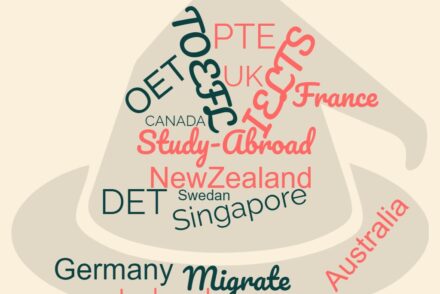It is needless to say that computer-based IELTS tests and online tests are becoming popular and all other international English tests are also becoming either online or computer-based.
British Council as well as IDP provide computer-based tests now and are becoming popular especially in the Covid-19 affected cities. Unlike pen-and-paper test, more number of test days available each month to take test if you choose to go for computer-based IELTS test. Besides this, results are announced faster too. You will get the results in less than 5 days.
Are the computer-based tests similar to pen-and-paper test?
Yes, it is similar in terms of the type of questions, patterns and complexity. Only difference is how the tests are conducted.
How do you choose which one would be suitable for you?
Very simple! Try and answer the following questions. If you get yes for all, computer-based test would be good for you.
- Are you a computer savvy person?
- Can you type fast and are you comfortable with a copy-paste facility?
- Are you a person who would prefer a short break between the LRW test modules?
- Do you get nervous being in an examination hall with over 100 test takers?
- Are you concerned about your handwriting and worried that what you write might not be legible for examiners?
If you have answered ‘Yes’ to all the above questions, a computer-based test is designed for you. Go for it.
If you are choosing to go for computer-based tests, the following tips/information will help you better prepare and perform well in the test.
Tips to face Computer-Based IELTS test:
1. Centre will not be overcrowded. Max 10 candidates only will be there and therefore, the environment will be peaceful for IELTS online test.
2. Examiner will help in between, if we are stuck with any confusion, like how to answer a particular type of question. Of course, he/she will not help you with answers.
3. Please remember that, for match-the-following type questions, answer will have to be dragged and dropped.
4. Paper, pencil, rubber, sharpener will be provided for all modules.
5. You will get a 2 to 3 minutes gap in between each module. Login id and password for each module (LRW) will be provided to you. We have to log in to each module, once the examiner gives you go ahead.
6. You can adjust the volume for the listening tests at the start or even in between tests. Headsets, which you get might not be a noise-canceling one, therefore, it is recommended to keep the volume little on the higher side to avoid getting disturbed by the sound from other’s headphones.
7. For reading, both passages and questions will be on the same screen. It will not be necessary to even scroll down to read the entire passage. The computer screen will be considerably large. To be exact, each section will be in a single slide/page. You will have to click next only 3 times. This is the same for the listening test also. You can also copy and paste words.
8. For the IELTS listening test, if you complete reading the questions within the given time, you can click the NEXT icon or press the tab button on the keyboard to go to the next section and start reading questions before the previous section audio starts. You can go back and forth anytime. However, the audio will continue as normal.
9. For IELTS writing there are 2 benefits, the word count will be displayed on the screen, which will avoid the need to count the words and you can edit the content anytime.
10. You will not be allowed to take wristwatch or mobile phones inside the lab. However, time left will be displayed on the screen for each test. Only minutes will be displayed, so be careful about the last minute of the test. Please note that your session will be logged out automatically after exactly an hour.
11. You can go to the washroom anytime except for the last 10 minutes of each test and during the gap between two tests.
12. You will have to wear a mask and a pair of gloves while taking the test. Practice speaking with mask on and typing with gloves on. Some centres will provide gloves if candidates fail to bring them. Please don’t count on it. It is safer to bring your own, so that you can get a comfortable one. Please practice using gloves, as you might find it a little difficult to type due to its slippery finish. Occasionally, they are allowing to remove gloves, if you are very uncomfortable with it, but, as soon as the test is over, you will have to wear it again.
13. For speaking, the test centre authorities will adjust the volume and camera before the start of the test. Examiner will not be wearing mask, so voice will be clear. Wearing a mask is also mandatory while taking the speaking test, for candidates. But if we feel very uncomfortable with it, they will allow to take test removing the mask. Since the decision entirely depends on the examiner, be prepared to speak with mask. Please but a thin mask which will be impact your sound. Simple single use masks are far better in terms of sound clarity. Thicker multi-layered cotton masks will significantly reduce your sound clarity.
14. Cue card will appear on the screen for 1 minute. You will be given a paper, pencil, rubber and sharpener to take notes.
15. Headphones will be there for speaking test also.
16. Locker facilities is available at the centre.
If you need more information or have some clarifications, please feel free to contact SkillUp Global (info@skillupglobal.com)
Regards,
Sony George
SkillUp Global



No Comments